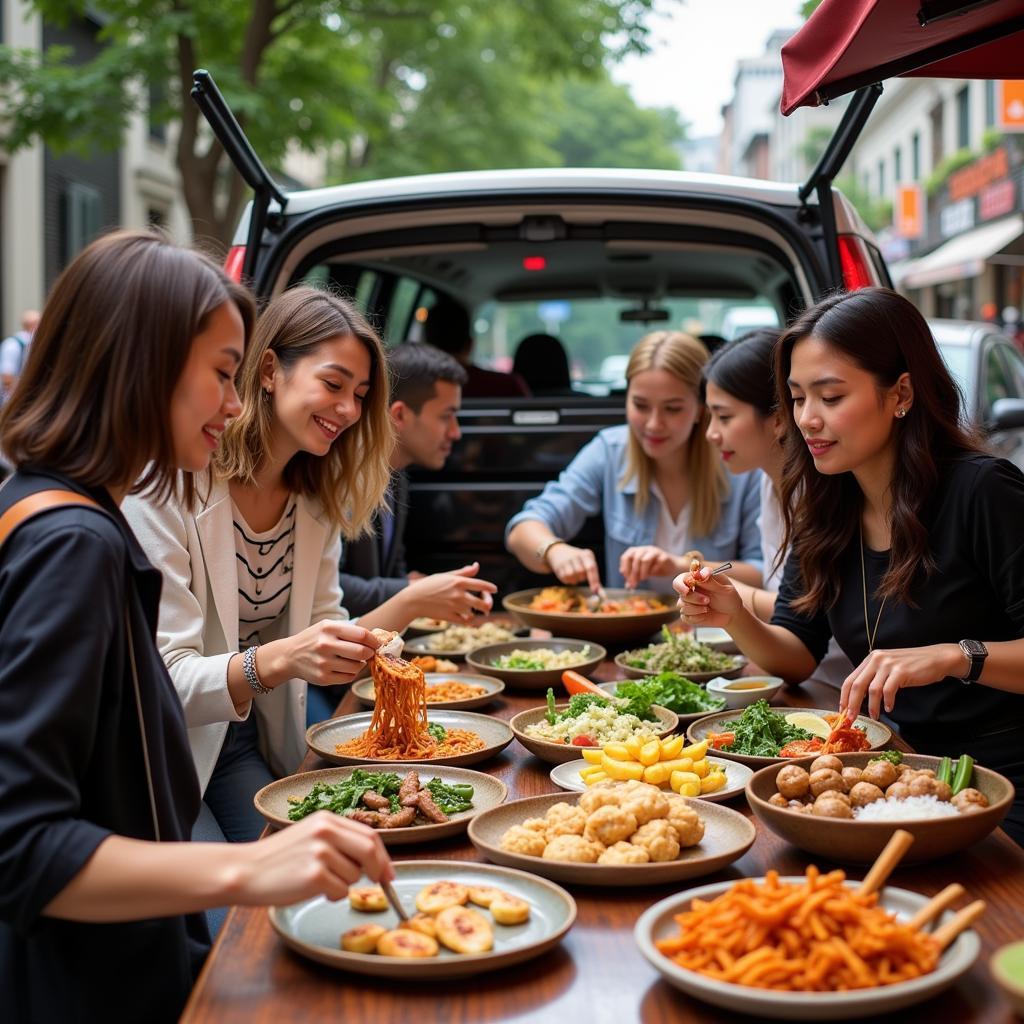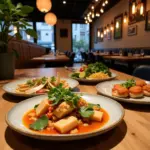Hanoi, a city steeped in history and culture, offers a vibrant culinary scene. Exploring Hanoi’s food means encountering “dưa ngâm” – pickled vegetables – a quintessential element of Vietnamese cuisine. These pickled delights add a unique tang and crunch to a wide variety of dishes, elevating them from simple meals to culinary experiences.
The Art of Pickling in Vietnamese Cuisine
Pickling (“dưa ngâm”) is more than just a preservation method in Vietnam; it’s an art form passed down through generations. From tangy papaya to spicy carrots, the variety of pickled vegetables reflects the diverse flavors of the country. Dưa ngâm adds a refreshing counterpoint to rich meats and savory broths, creating a balanced and harmonious flavor profile. The pickling process, often using a simple brine of salt, sugar, and vinegar, transforms humble vegetables into vibrant, flavorful additions to any meal.
Common Types of Dưa Ngâm and Their Uses
Different types of dưa ngâm complement various dishes, adding layers of complexity and texture. Here’s a glimpse into some popular varieties:
- Dưa chua (Pickled Mustard Greens): A staple in Vietnamese households, dưa chua offers a pungent, sour flavor that cuts through the richness of fatty meats. Often enjoyed with bánh mì or grilled dishes.
- Cà rốt dưa chua (Pickled Carrots): Sweet and slightly tangy, pickled carrots provide a refreshing crunch. They are often served as a side dish or incorporated into salads.
- Đu đủ dưa chua (Pickled Papaya): With a crisp texture and a sweet and sour taste, pickled papaya is a popular addition to bánh mì and various noodle dishes.
Savoring Hanoi’s Dishes with Dưa Ngâm
Dưa ngâm enhances the flavor profile of numerous Hanoi specialties. From street food to fine dining, these pickled vegetables add a unique dimension to each bite.
Must-Try Dishes featuring Dưa Ngâm
- Bún chả: This iconic Hanoi dish, featuring grilled pork served with vermicelli noodles and a dipping sauce, is incomplete without the tangy crunch of dưa góp, a type of pickled salad.
- Phở: While not always included, a side of dưa chua can elevate the rich flavors of phở, adding a refreshing contrast to the savory broth and tender beef.
- Bánh mì: The quintessential Vietnamese sandwich, bánh mì, often incorporates pickled carrots and daikon radish, providing a tangy counterpoint to the savory fillings.
Why Dưa Ngâm is Essential to Hanoi’s Cuisine
“Dưa ngâm is not merely a condiment; it’s a fundamental element that balances the flavors and textures of many Vietnamese dishes. It’s the tangy counterpoint that makes the rich flavors truly sing.” – Anh Nguyen, Hanoi Food Historian
Experience Hanoi’s Culinary Gems with TRAVELCAR
Explore Hanoi’s vibrant food scene and discover the unique flavors of dưa ngâm with TRAVELCAR. We offer a range of transportation services, including 16-seater, 29-seater, and 45-seater vehicle rentals, airport transfers, and customized food tours. Let us take you on a culinary adventure through Hanoi’s hidden gems.
 Hanoi Food Tour with TRAVELCAR
Hanoi Food Tour with TRAVELCAR
In conclusion, exploring the world of dưa ngâm is essential to understanding the depth and complexity of Hanoi’s culinary landscape. From the simplest street food to the most elaborate dishes, these pickled vegetables add a unique dimension that truly captures the essence of Vietnamese cuisine.
FAQ
- What are the health benefits of eating dưa ngâm?
- How long can dưa ngâm be stored?
- Can I make dưa ngâm at home?
- What are some other dishes that incorporate dưa ngâm?
- Where can I find the best dưa ngâm in Hanoi?
- What are the different types of vinegar used in making dưa ngâm?
- How spicy is dưa chua?
For any assistance, please contact us at Phone: 0372960696, Email: TRAVELCAR[email protected], or visit us at 260 Cau Giay, Hanoi. Our customer service team is available 24/7.

